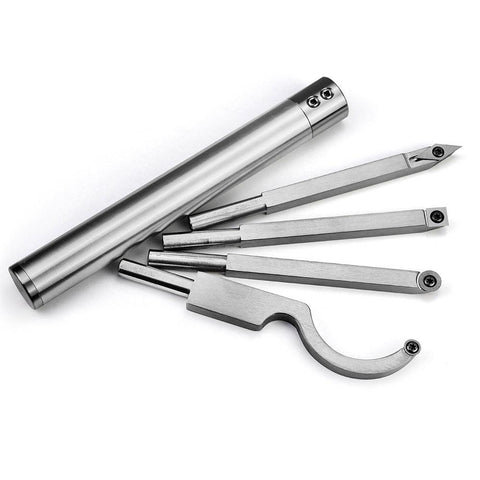


Choosing the right turning tools is one of the most crucial steps for any woodturner, especially for beginners eager to dive into this rewarding craft. The right tools can make the difference between a frustrating experience and a fulfilling one, impacting both the quality of your work and your overall enjoyment of the process. With a plethora of options available, understanding what to look for in turning tools can seem daunting. However, by considering a few key factors, you can make informed decisions that will set you on the path to successful woodturning.
The first step in selecting turning tools is understanding the different types of tools available and their specific functions. Woodturning tools can be broadly categorized into three types: roughing tools, shaping tools, and finishing tools. Roughing tools, like the spindle roughing gouge, are used to transform square or rectangular blanks into cylindrical shapes, making them ideal for initial shaping. Shaping tools, such as bowl gouges and spindle gouges, are designed for more intricate work, allowing you to carve and define the details of your project. Finishing tools, like parting tools and scrapers, help refine the surface and edges, ensuring a smooth final product. Knowing which tools are essential for your specific project can guide your selection process.
When considering which turning tools to purchase, the material of the tool is also an important factor. Turning tools are typically made from carbon steel, high-speed steel (HSS), or carbide. Carbon steel tools are generally the most affordable but may require more frequent sharpening. HSS tools offer a longer edge retention and can withstand higher temperatures, making them a popular choice for both beginners and experienced turners. Carbide tools, while more expensive, provide the advantage of being less prone to dulling and can be turned without frequent sharpening, making them an appealing option for those looking for low-maintenance tools. Evaluating your budget and preferences can help you decide which material aligns best with your woodworking style.
Another critical consideration when selecting turning tools is the tool's size and weight. For beginners, starting with lighter, smaller tools can be beneficial, as they are easier to maneuver and control. As skills progress, transitioning to larger, heavier tools can provide more stability and power for shaping larger projects. It's essential to find a balance that feels comfortable for your specific needs and allows for smooth operation on the lathe. Holding different tools in your hands, if possible, can give you a sense of how they feel and whether they suit your grip and strength.
The design of the tool, including its handle and blade shape, is also crucial to consider. Tools with ergonomic handles can significantly enhance comfort during extended use, reducing the risk of fatigue and strain. Additionally, the angle of the blade and the shape of the cutting edge can impact how effectively the tool performs on different types of wood and projects. For instance, a bowl gouge with a swept-back grind allows for smoother cuts when hollowing out a bowl. Experimenting with different blade shapes and angles can help you determine which designs work best for your turning style and the projects you enjoy.
While price is often a concern when purchasing turning tools, it's essential to recognize that investing in quality tools can pay off in the long run. High-quality tools not only perform better but also last longer, reducing the need for frequent replacements. Consider starting with a small selection of essential tools rather than attempting to buy everything at once. Focus on acquiring a few versatile tools that can cover various projects, and gradually expand your collection as you gain experience and identify specific needs.
A crucial part of selecting turning tools is researching and seeking advice from experienced woodturners or instructors. Online forums, woodworking classes, and local clubs can provide valuable insights and recommendations based on real-world experiences. Additionally, many manufacturers offer tool demonstrations and workshops, giving you the opportunity to see the tools in action and ask questions about their features and benefits. Learning from others can help you make informed decisions and avoid common pitfalls.
Lastly, don't overlook the importance of maintenance and care when choosing your turning tools. Tools that are easy to sharpen and maintain will enhance your overall experience and keep your projects progressing smoothly. Look for tools that come with user-friendly instructions on maintenance, or consider investing in a sharpening system to keep your tools in top shape.
Choosing the right turning tools is an essential step in your woodturning journey. By understanding the types of tools available, evaluating their materials and designs, and considering factors like size and maintenance, you can make informed decisions that enhance your skills and enjoyment of the craft. As you develop your woodworking abilities, the right tools will become invaluable companions, enabling you to create beautiful, functional pieces that reflect your creativity and passion. Whether you're crafting simple items or embarking on more complex projects, having the right tools can elevate your work and make your experience truly rewarding.